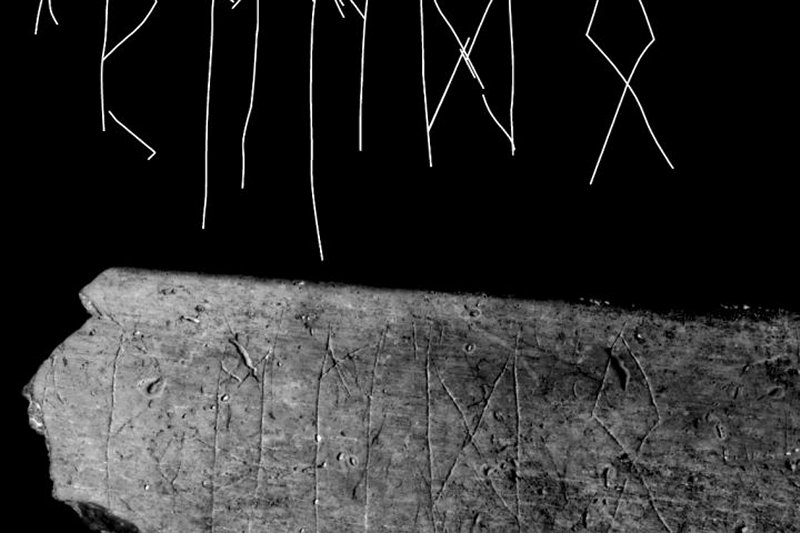Conny Waters – AncientPages.com – An inscribed animal dated to the seventh century proves that Germanic runes were the oldest script ever used by the ancient Slavs, according to a new study.
The artifact was excavated at the Lány-Břeclav site in the Czech Republic in 2017 along with pottery ᴀssociated with the Early Slavs.
 Image credit: Masaryk University
Image credit: Masaryk University
The find has been later studied by an international team of researchers from the Czech Republic, Austria, Switzerland, and Australia. The results of the study provides the earliest evidence of the use of a writing system among Slavs.
The bone, however, is inscribed with Germanic runes and is therefore not written in the Glagolitic script, which was previously thought to be the first writing system used among Slavs.
According to Jiří Macháček, from Masaryk University in the city of Brno“ this is a major discovery of not just national significance but of European importance,” the researcher said.
“These sensitive analyses revealed the bone to be that of a cattle which lived in approximately 600 CE,” said Zuzana Hofmanová, a member of the team from the University of Fribourg.
Robert Nedoma, an expert on Germanic languages from the University of Vienna, identified the inscription to be written in Older Futhark.
This script was used by Germanic-speaking inhabitants of Central Europe from the second to seventh centuries CE. The Older Futhark alphabet consists of 24 runes, the seven last of which were inscribed on the recently discovered rib fragment.
 The rare bone find appears to prove Germanic runes were used before a Slavic alphabet was invented in the ninth century. Image credit: Masaryk University.
The rare bone find appears to prove Germanic runes were used before a Slavic alphabet was invented in the ninth century. Image credit: Masaryk University.
It is likely that the entire alphabet was originally inscribed on the bone. The bone was not inscribed with a specific message.
Currently, European researchers are aware of only 17 inscriptions containing complete or partial lines of Older Futhark.
Until this discovery, the oldest writing system among Slavs was considered to by the Glagolitic script, which was brought to Moravia from the Byzantine Empire in the ninth century CE by Saints Constatine /Cyril and Methodius
The recent discovery demonstrates that before the introduction of the Glagolitic script the Slavs had come into contact with runes, and this finding calls into question whether cultural differences between Germanic and Slavic Europe were so clear cut.
“The fact that it is the earliest evidence of writing among Slavs is certainly interesting for the nearly 300 million people who speak Slavic languages,” added Macháček.
Inscriptions in Old Germanic runes are often ᴀssociated with Germanic mythology.
Today, people may encounter them in various fantasy films, such as those of the Lord of the Rings series, or in video games.
Paper
Written by Conny Waters – AncientPages.com Staff Writer





